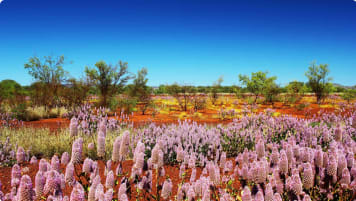Pastoral Pioneers of the Kimberley
Learn about Pastoral Pioneers on a Western Australia small group tour for seniors into the outback for senior and mature couples and solo travellers.
14 Feb 22 · 13 mins read

Pioneers in the Kimberley
By Marco Stojanovik
In 1880 news reached the little town of Pinjarah, Western Australia (then the Swan River Colony), of the wonderful, rich, extensive land in the Kimberly recently explored by Alexander Forrest and party. Upon hearing the news, pioneer Hamlet Cornish, along with A. R. Richardson, W. Paterson, G. Paterson and S.R. Elliott quickly formed a syndicate, the “Murray Squatting Company”, and set out to adventure in the new country. They secured a schooner, “Mary Smith”, and in October 1880, with 700 sheep, seven horses, nine men in total, and enough supplies for twelve months, set sail from Fremantle.
When they first arrived at Beagle Bay, they were greeted by tropical country with palm trees and lovely springs, crystal water oozing over their mounds. But within a few days the stock were showing discouraging signs and a great many began to die, the herbage being too course and rank. The party then instead decided to make a shift to Lake Louisa, leaving behind part of their supplies locked up in a tin hut they had erected at Beagle Bay.
After journeying twenty-five miles they reached Lake Louisa: a most beautiful freshwater lake, teeming with ducks and game of all descriptions. They constructed a snug, artistic grass house, plaited in and out with native timber, and settled in. A week later, however, they were to encounter their first major obstacle of many on their pioneering adventure.
This article explores the obstacles and difficulties faced by the Murray Squatting Company, pioneers of today’s extensive pastoralism industry in the Kimberly. It also explores the nature industry in the region since then. Much of the information for this article is sourced from the booklet, “Pioneering in the Kimberleys”, taken from Hamlet Cornish’s original manuscript novelised and published in 1950 as The Call of the Kimberley. It is intended as background reading for Odyssey Traveller’s Tour of Australia’s Kimberley.
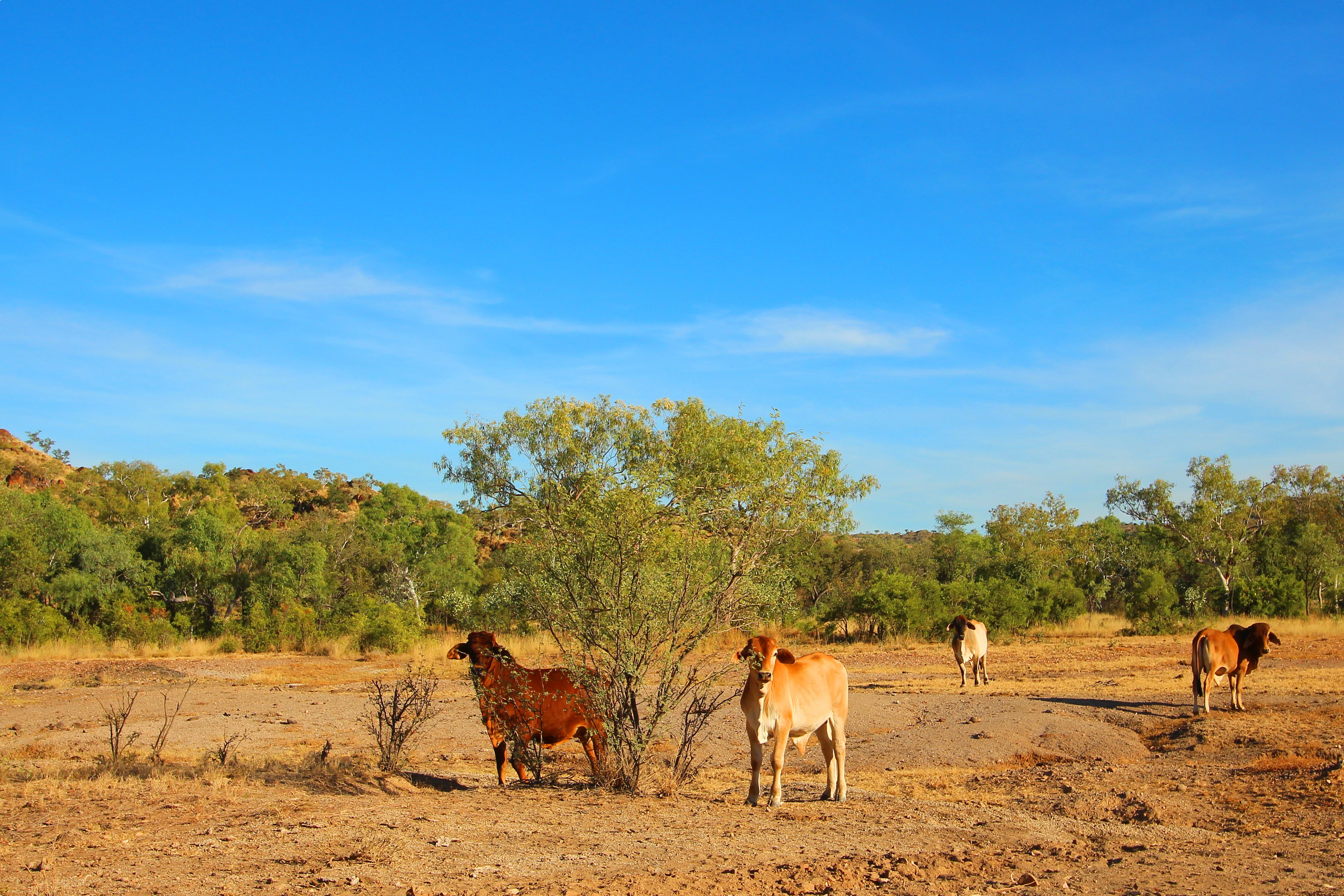
Stolen Goods
With supplies running short at Lake Louisa, three men, Elliott in charge, and three pack horses made their journey back to Beagle Bay. On arrival they found, to their astonishment, that the local Aboriginals had broken into the tin hut and stolen almost everything: hats, photographs of loved ones, painkiller pills, bags of flour, a cask of pickled pork and other luxuries. Only a cask of beef remained.
Hoping to recover some of the goods, Elliott and his party followed a track, white and beaten from the large stolen felt hats of flour that had been dragged along. They continued on through mangroves and thick, dense undergrowth, guided here and there by a patch of white flour, until reaching a creek where the tide had come in and covered the tracks. With night fast approaching, they retraced their steps back to the tin house, lamenting their loss.
Upon hearing the news back at Lake Louisa, Cornish and three of the other men (Paterson, Mayall, and an Aboriginal man from the Swan River named Chibby) started out for Beagle Bay with fire arms and equipment intending to recoup their stolen goods, by force if necessary. After spending the night at the tin hut, they armed themselves with a revolver, rifle, and good supply of ammunition and headed for the northern part of the Bay as the most likely part to find them.
Through dense mangroves, tangled undergrowth, and muddy creeks, they eventually reached a little sand ridge from which they could see smoke rising. They made a charge on the camp and the Aboriginal men showed fight, quivering their spears and screaming out. One of them threw a spear, grazing one of Cornish’s men. Cornish fired his rifle in response and the Aboriginal men bolted into the bushes.
Rather than chasing after them, Cornish and his men retraced their steps, intent on returning to the tin hut. Along the way they came across another mob of local Aboriginals, some with photographs hanging around their waists and pieces of garments tied here and there. Cornish offered them tobacco for the photos which they readily exchanged. They would fail to find the other stolen goods, however.
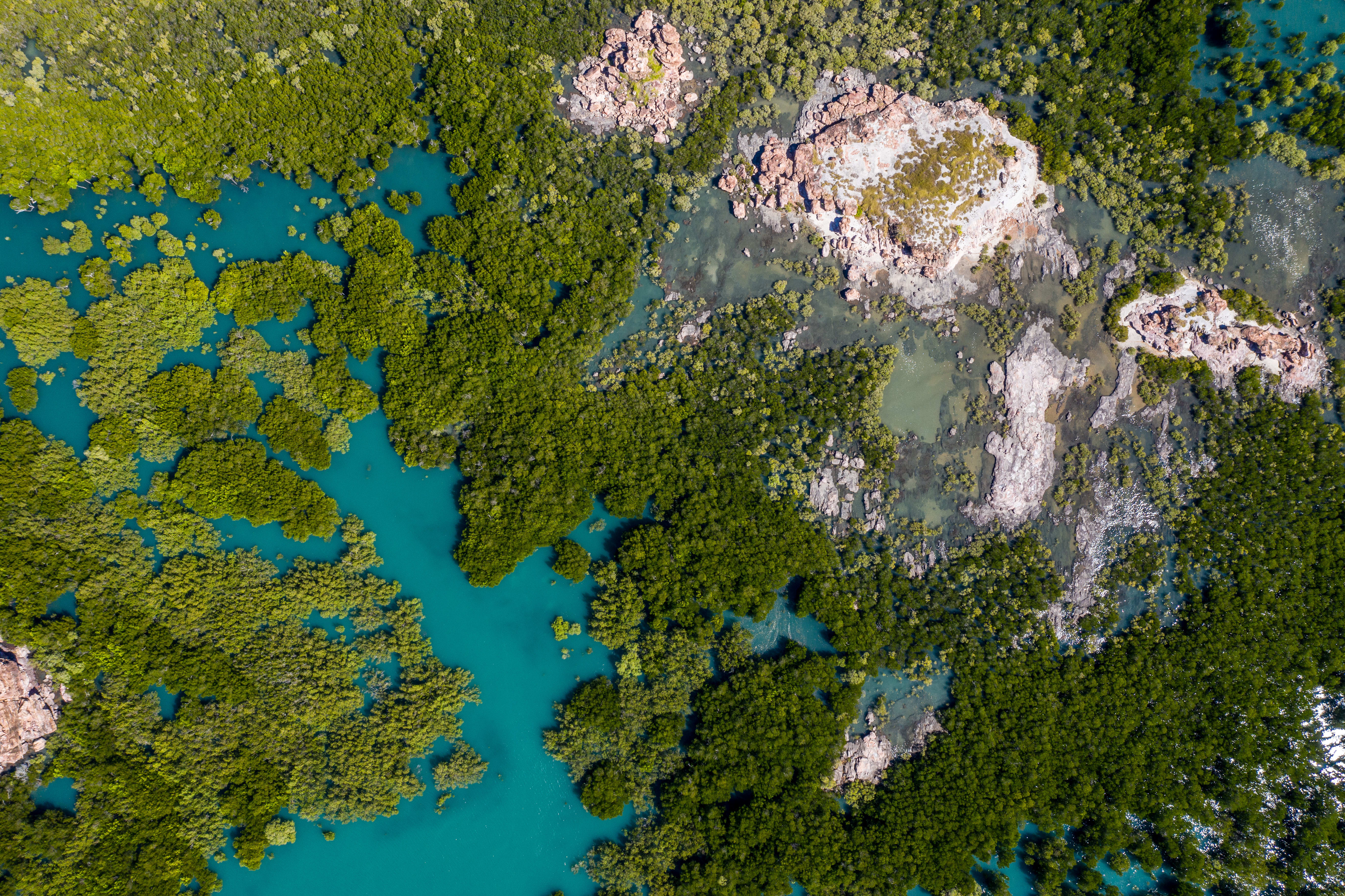
To the Fitzroy River
Making do without the flour and other goods, the men of the Murray Squatting Company remained at Lake Louisa for about a fortnight. Eventually though, anxious to see Fitzroy country, Cornish, Paterson, Mayall and Chibby set off to explore with a couple of pack horses and provisions for a fortnight. They journeyed through thick and dense country, plagued by fields of mosquitos and intense heat. By the end of the day, with horses fatigued, they were desperate for water. They had almost given up hope when they came across a path and followed it to a well. Here they had a drink and camped for the night.
As Cornish and the men left the next morning, they came across a few surprised local Aboriginals. Chibby gave them tobacco and damper and they made signs to take Cornish’s men to the “Weanawalla” meaning a big river, the Fitzroy. Two of them joined the party, one christened “Legs” and the other “Yandy”.
With Legs and Yandy guiding them, they arrived at the Fitzroy at sunset: a beautiful river about 100 yards wide, beautiful and scented acacia and bamboos lining its banks, teaming with ducks and several crocodile heads just peeping above water before disappearing without a ripple. Around it stood a beautiful, wide and extending plain with luxuriant herbage.
They journeyed up the river for two days towards Mount Anderson, past caves and springs of water. The country they explored was deemed marvellous for grass suitable for grazing livestock, and so perfectly satisfied the party retraced their steps for Lake Louisa.
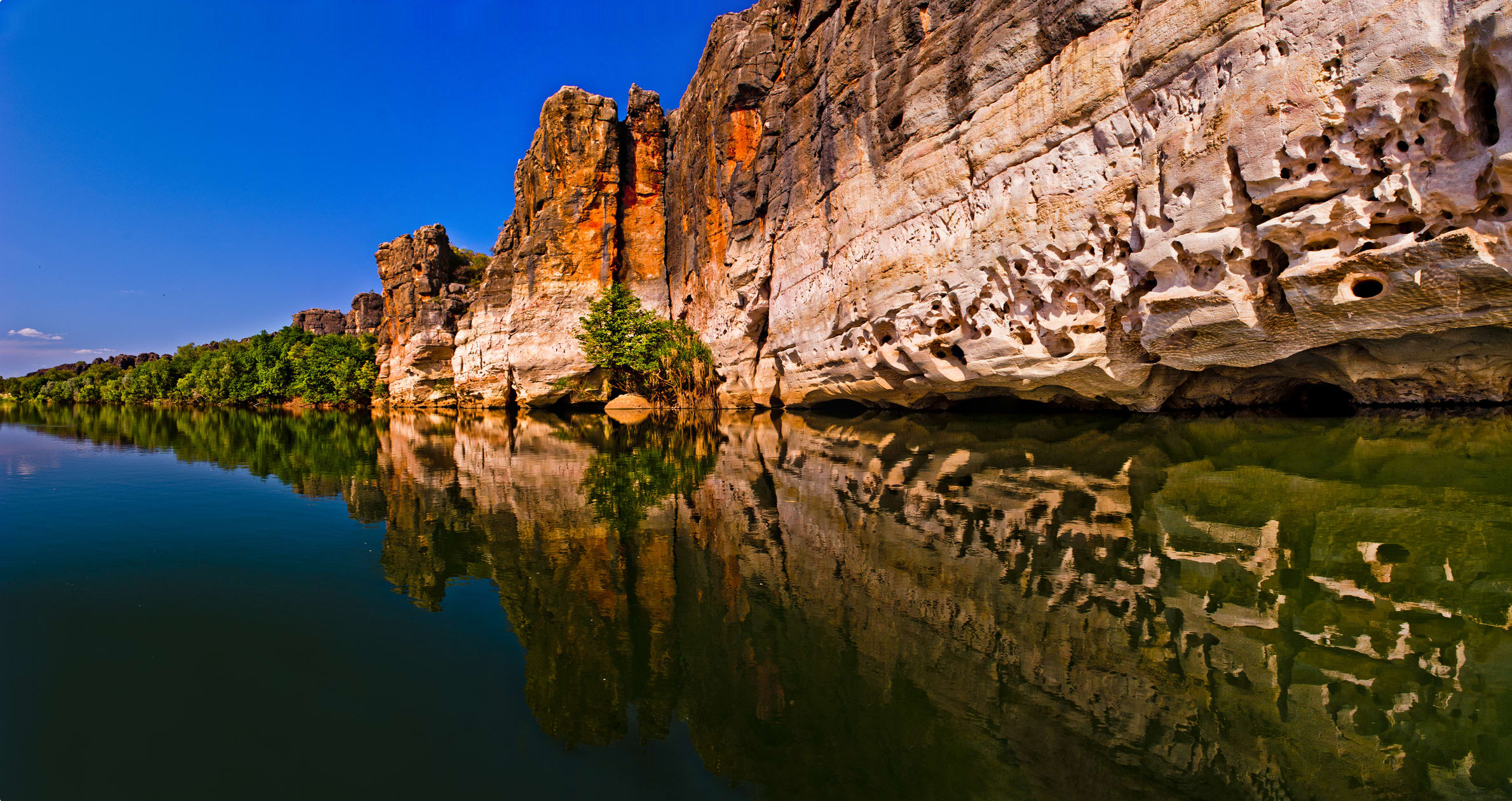
A Man Goes Missing
Within a mile of reaching Lake Louisa, the men met Elliott, who had found all his horses dead after having been poisoned by the Darling pea and gone mad. Neah, another Aboriginal man from the Swan River accompanying the Murray Squatting Company, had gone out searching for the horses and gotten lost. Ten days later and he still hadn’t returned.
The next morning Cornish, Elliott and Legs set out to track Neah. Following his tracks for several days to no avail, they eventually came across the tracks of Aboriginals following behind. They decided to follow those and after going several miles came upon a dozen of the men, one of them holding Neah’s leather strap around his wrist. When questioned, the man said he had found it, but the others didn’t believe him thinking that Neah had been killed. Skirmishes soon broke out between the two groups, however, and no more information about Neah could be gathered.
The Murray Squatting Company remained at Lake Louisa for about a couple of months in all. Six weeks after returning from their search for Neah, they abandoned the idea of searching any further, anxious to travel on to Bungarrowgutt. First though, they had to gather some horses that had been grazing and stayed away.
With provisions for three days, Chibby and Cornish set off to look for the horses towards Beagle Bay. After travelling a considerable distance over five days with heat pounding down and water supplies exhausted, they finally found them. Travelling along they came across a party looking for Aboriginal men who had ran away from the pearling grounds. Approaching them Cornish was spellbound: accompanying the men was Neah looking very melancholy and sad.
Neah told him he had gotten lost in the desert with his horse, travelling miles and miles without water. Eventually a terrific thunder shower had fallen, saving his and horse’s life. He had then travelled on until he had reached the coast and come across this searching party who, hearing about his hardships, had promised to take him back to the Murray Squatting Company’s camp. They were on their way when Cornish and Chibby came across them. Neah was returned and the three made their way back to camp. Never had there been such a happy party.
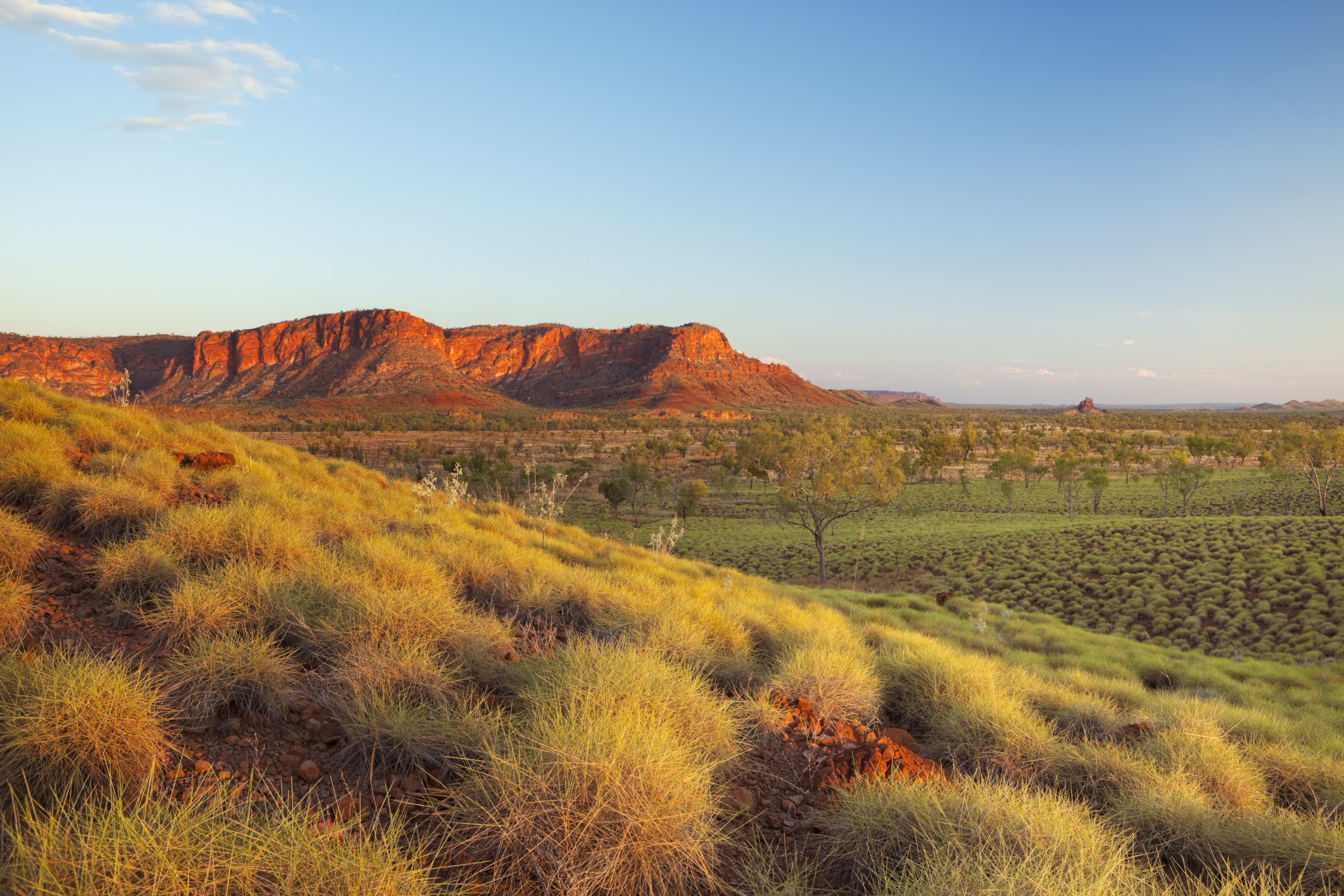
Establishing Yeeda Station
The Murray Squatting Company then moved on to Bundarrowgutt, where they stayed put for a couple of months with their stock faring much better and game very plentiful. After two months they then travelled further on to the Fitzroy, camping at an angle to the Minnie, a tributary of river. They made a house of native timber with a bamboo roof and remained there for some time.
Eventually a party arrived from Cossack, coming overland with horses and bringing mail with them, the first news to reach the Murray Squatting Company from the civilized world in eight months. Amongst the news was that the company’s application for land had been received and granted; they had been given 100,000 acres free of rent for fourteen years on the Yeeda River, a tributary of the Fitzroy, to form their station.
Shifting camp to a well-selected spot on the Yeeda, they soon settled down, erecting a permanent house constructed of wood and iron, yards, shearing sheds and other buildings. In no time the first shear had been clipped and work became very busy.
Conflict on the Station
The Murray Squatting Company established Yeeda Station on land that was traditionally occupied by Aboriginal people. The traditional owners of the areas around the Fitzroy River include the Nyikina peoples of the north west and the Warwa peoples to the south east, who have lived in the area for up to 120,000 years. The local peoples know the area as Mardoowarra, and the river and its vast floodplains are of great spiritual, cultural, medicinal and ecological significance to them.
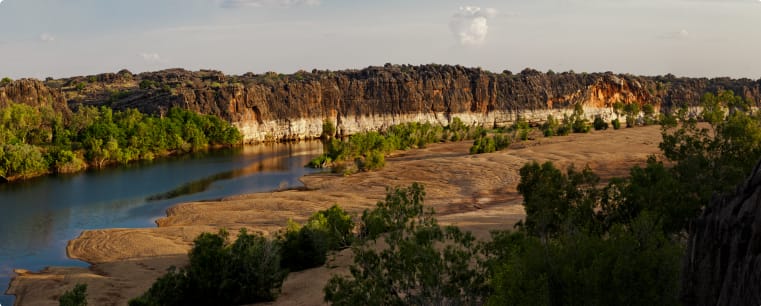
Unsurprisingly conflict soon arose between the traditional owners and squatters. In his manuscript Cornish explains how soon after the station was set up three Aboriginal boys acting as ‘spies’ approached looking for work. Smart and active, they were able to do useful work around the station looking after the horses, and soon got to know the run and timing of the station. When the shearing season was almost complete, the boys requested a holiday and set off into the bush to see their friends.
Using the information they had gathered about the station, the three men later returned and ambushed Neah while he was alone with his sheep. Neah and several of the sheep were speared to death. A group of Aboriginal men also separately approached the other squatters but, suspicious, Cornish had scared then off with his rifle.
The squatters swore revenge, following the mob of Aboriginals through the spinifex, over mountains, and through long grass, eventually coming to just across the creek from them. But when Chibby’s gun misfired, he badly wounded himself in the arm and ear and the chase was abandoned.
A couple months later, five Aboriginal men including the three spies were spotted up a tree watching one of the squatter’s movements. Shots were fired and the Aboriginal men bounded and bolted off, a bullet that landed close to their feet injuring one of their toes.
More spies were spotted later that night. Again, the squatters resorted to using firearms, seriously injuring and potentially killing one of the Aboriginal men, while shattering the spears of others. The Aboriginal men retreated into the bush and the conflict subsided, albeit ready to burst back to the surface at any time.
New Arrivals & New Disasters
After a year of the Murray Squatting Company being in the country and reporting positively on the resources and their experience, other companies soon began to arrive in the Kimberley. Sites were chosen on the Fitzroy and its tributaries, homesteads and stations built, and the companies settled down. The first to follow was the Kimberley Pastoral Company consisting of four men of European background including Tony Cornish, younger brother of Hamlet Cornish.
Hamlet soon became anxious to further explore the country 200 miles up the River. He formed a party with some of the new arrivals, intending to also take Tony with him. However, roaring currents on the river, carrying logs and snags with it, made it impossible to cross to reach him. Greatly disappointed, Hamlet and the others set off on their tour provisioned for a fortnight.

Upon returning, within a few miles of home, they experienced a terrific storm, rain falling in heavy torrents and making the ground so soft it was impossible to get on. The party were forced to camp, sitting by their packs all night unable to kindle a fire as everything was soaking wet.
When they reached the station the next morning, sheep were bogged everywhere, some dead, others dying. Meanwhile, the homestead had been blown out, debris scattered everywhere. Then the news came that Tony was dead. His neck had been severed with an axe by a local Aboriginal named Guirella who was working on his station.
The squatters swore revenge and, with the assistance of a police sergeant and party arriving from the town of Roebourne, pursued Guirella through the Pindan country over mountains and creeks. Eventually he was found and, after some chases and skirmishes, arrested along with two others for stealing sheep and a fourth for physically hitting one of the squatters. They were all taken to Perth, tried and found guilty. As history shows, however, this would not be the end of conflict between European settlers and the traditional owners of the lands in the Kimberley.
Pastoralism in the Kimberley
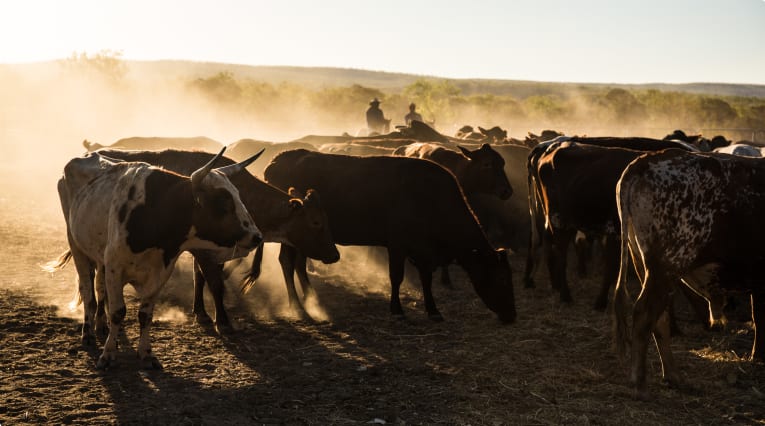
By the time of the death of Tony Cornish, settlement in the district had begun to fairly commence. In 1882, over 44 million acres of land had been leased to 77 people by the Lands Department, albeit with no consideration of its Indigenous inhabitants. Many thousands of sheep were landed at Beagle Bay, before most were replaced with cattle more suitable to the environment a few years later.
The town of Derby was founded soon afterwards in 1883 after a government party which, short on water, landed and discovered a well that that had been sunk there for the Yeeda Station’s sheep. Survey parties then followed under the Surveyor General Sir John Forrest, triangulating the country and traversing all the rivers. That year the Murray Squatting Company received an offer through Alexander Forrest, Sir John’s brother, to sell the station, which they accepted, growing weary of the difficulties and general isolation.
The historical Yeeda Station continues to function to this day as a working cattle station in the Kimberley region. Once part of the Sir Sidney Kidman Empire, it has changed hands several times over the years, most recently purchased by the current owners, Jack and Vicki Burton, in 1999 for Yeeda Pastoral Company.
The station forms part of a larger pastoral tradition in the Kimberley, something the region is known for nationwide. Indeed, pastoralism has become one of Kimberley’s main industries with pastoral leases accounting for over 30% of its land tenure. More successful than ever, the demand for live export continues to grow steadily today, with the main export market currently in Indonesia.
For tourists, the Kimberley presents an opportunity to experience remote station lifestyles. Many stations offer accommodation and other services, while still pursuing their cattle activities.
With the growth of the industry, however, came the displacement of many Indigenous inhabitants, forced off their lands to make room for the pastoralists unless employed as station workers. Many of these people hold a strong desire to return to their land and practice their tradition, law and culture, striving for independence and self-determination.
Some Indigenous groups were finally able to return following the aboriginal homelands movement of the 1970s and today the Kimberley has one of Australia’s highest proportions of Aboriginal inhabitants, making up nearly half of the region’s population. An essential cultural obligation is the maintenance of cultural and art sites, many of which have become tourist attractions in the Kimberley Region.
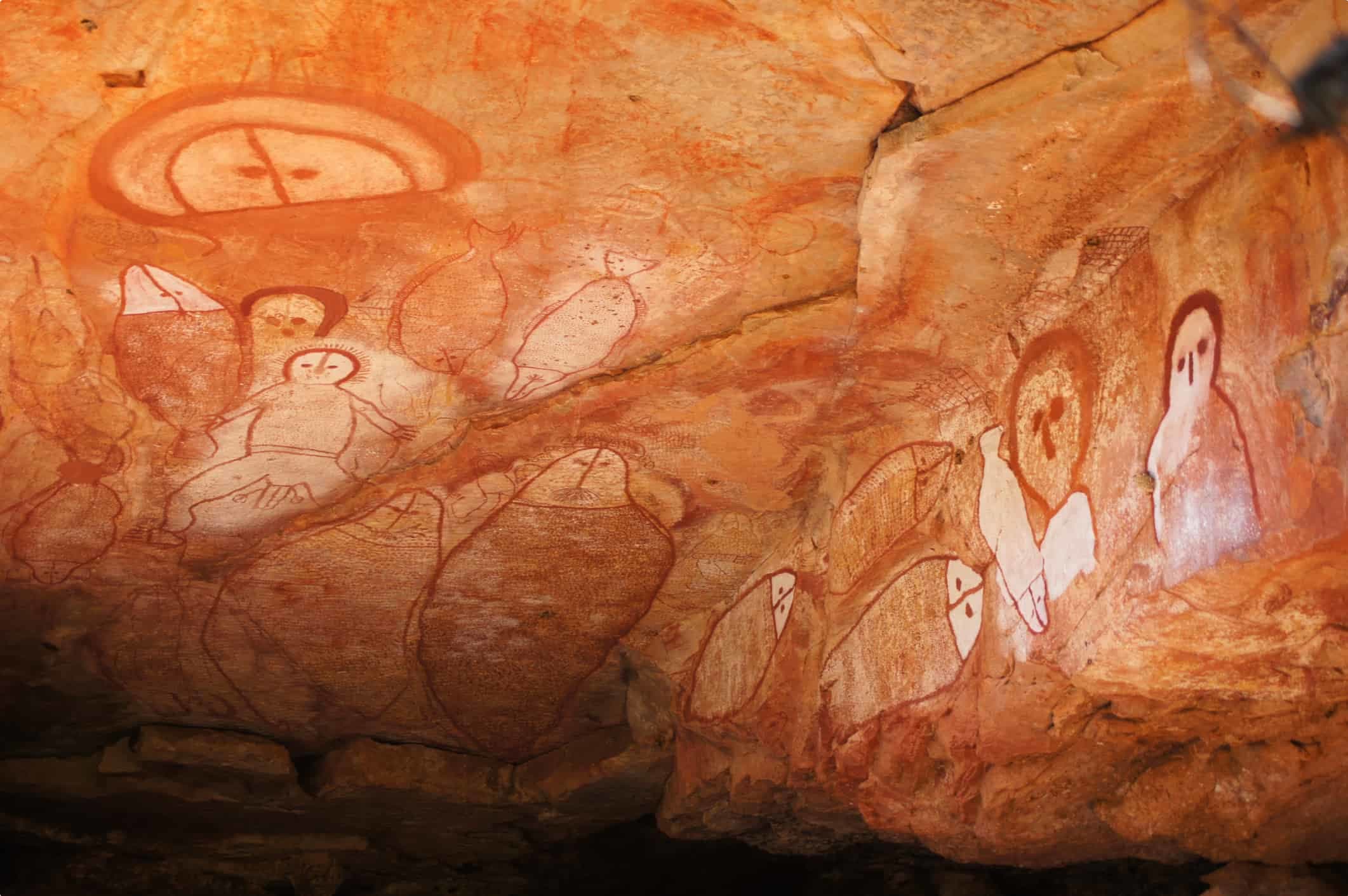
A New Wave
In recent years, Indigenous groups in the Kimberley have acquired several stations on their traditional country. These Indigenous-owned cattle ventures aim to progress towards positive economic, social, and cultural outcomes for their communities by delivering jobs, career pathways and training opportunities. Traditional owners are provided with the opportunity to work on country, while younger employees can work alongside elders and re-establish their own links to country.
For example, most recently in February 2022, the Yawuru traditional owners finally took over Roebuck Plains station’s operation on Gumaranganyjal, near Broome. This was a long process, taking place 16 years after the Yawuru were originally granted native title over more than 530,000 hectares of their traditional country, including the land and waters in and around Rubibi (the town of Broome). The Indigenous Land and Sea Corporation bought Roebuck Plains station in 2014, managing it until the Yawuru were finally ready to take over.
This has marked a new era for Yawuru participation in the cattle and pastoral industries in the Kimberly. Located on rich marine floodplains 30km east of Broome, the station has the capacity to support 20,000 head of cattle, with the business supporting training and employment opportunities for Yawuru people.
These business interests are balanced with important cultural and environmental values central to the Yawuru worldview. These include teaching the young people and taking care of important natural and cultural sites. As such, in addition to the cattle station, the land also includes an Indigenous Protected Area, which is cared for by a staff of Yawaru people.
With Gumaranganyial country and the station now back into Yawuru possession, the people can maintain sustainable links to their land which forms a central part of their existence.
Tour of the Kimberley
Odyssey Traveller is pleased to announce our new small group tour of the Kimberley, Western Australia. Our tours of mature and senior travellers for couples and solo travellers of up to 12 people leave at the best times to visit the Kimberley: the dry season, June to September, or at the end of the wet season in April and May when the landscape is lush and the gorges – Bell Gorge, Cathedral Gorge – and rivers – Gibb River, Fitzroy River, and Tunnel Creek – all flow with water. Seeing masses of water flow in a place where the landscape is dry for most of the year is one of the delights of a trip in the Australian outback.
Odyssey Traveller’s outback small group package tours are designed especially for mature and senior travellers who want an authentic experience of the fascinating Kimberley region. Our Kimberley tour begins and ends in the city of Broome, home to iconic Cable Beach, dinosaur remains at Gantheaume Point, a world-famous bird sanctuary at Roebuck Bay, and a fascinating history as a centre of pearling. From Broome, we head along the pristine Indian Ocean Kimberley coast and then turn along the Gibb River Road, making side trips to Windjana Gorge National Park and Tunnel Creek National Park, beautiful Bell Gorge (particularly verdant in the wet), and the easily accessible Galvans Gorge. We head onto the Mitchell Plateau – for many the last frontier of the Australian outback – to admire ancient Aboriginal rock art and the vast Mitchell Falls.
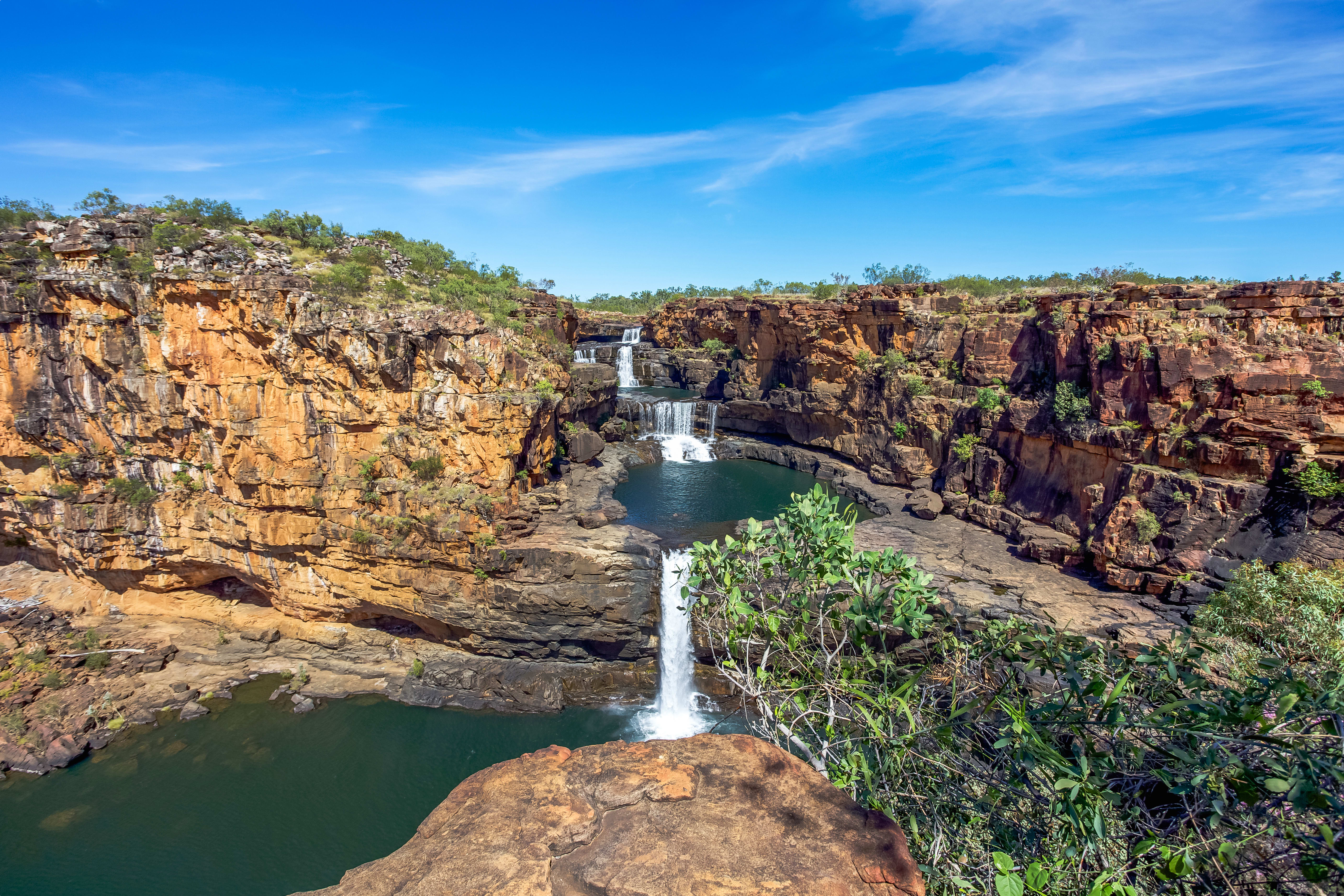
This small group tour of the Kimberley has a minimum participant requirement of five people per departure of this fifteen-day adventure. We have scheduled departures, typically commencing in April through to early November. We do not operate trips to the Kimberley region during the wet season.
Articles about Australia published by Odyssey Traveller:
- Uncovering the Ancient History of Aboriginal Australia
- Aboriginal Land Use in the Mallee
- Understanding Aboriginal Aquaculture
- Mallee and Mulga: Two Iconic and Typically Inland Australian Plant Communities (By Dr. Sandy Scott).
- The Australian Outback: A Definitive Guide
For all the articles Odyssey Traveller has published for mature aged and senior travellers, click through on this link.
External articles to assist you on your visit to the Kimberley:
- Australia.com: Guide to the Kimberley
- 10 Must Visit Attractions in the Kimberley
- Broome’s History in a Pearl Shell
- The West Kimberley, Western Australia
- The Kimberley
- Broome, the pearl of Western Australia
- Kimberley’s hidden world of Indigenous rock art revealed by researchers
Originally published March 23, 2021.
Updated on February 14, 2022.
Related Tours

13 days
May, Jun, Jul, Aug, SepSmall group tour of Australia's Kimberley
Visiting Western Australia
Escorted small group tour of the Kimberley. We explore and visit The Bungles, Bell Gorge, Mitchell plateau & Halls Creek in the dry season. Amazing landscapes intertwined with Aboriginal communities resident more than 45,000 years.
From A$15,390 AUD
View Tour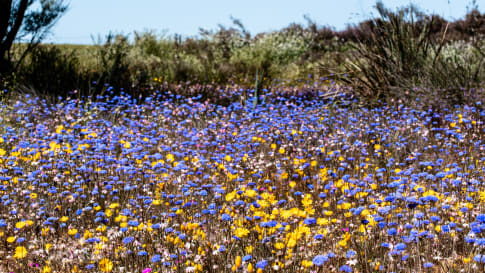
15 days
Aug, SepWildflowers tour of Western Australia
Visiting Western Australia
Escorted small group tour for senior and mature travellers as a couple of solo traveller. Upto 12 people of WA's Wildflower regions including Esperance and the Fitzgerald river National park. Local guides and program leader share knowledge about this fascinating region whilst in bloom.
From A$12,250 AUD
View Tour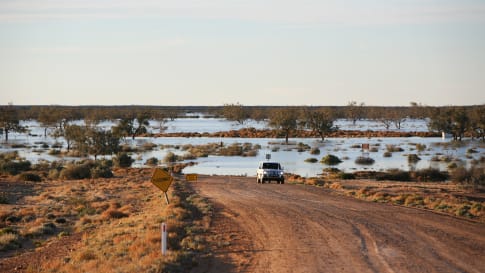
65 days
MarLong tour of Australia for a small group
Visiting New South Wales, Northern Territory
Small group tour for senior couples and solo travellers touring Australia. Travelling through the outback and visiting many of the famous sights as well as off the beaten track locations. Learn about the history of the people who explored the deserts, from indigenous communities to Europeans, as well as Burke and Wills, visit White Cliffs, Marree and far north Kakadu and the Kimberley.
From A$48,995 AUD
View TourArticles
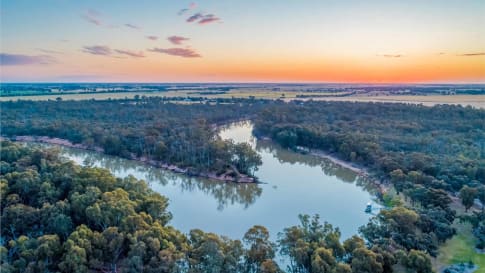
Appreciating Australian River Systems
Appreciating the linking of the river network into the Australian, history, culture and landscape on a small group tour for mature and senior travellers of couples or solo travellers is an integral part of understanding the continent of Australia and Aboriginal settlement.

Australian Outback Cattle King
These mature and senior programs for couples and senior travellers explore the outback Sidney Kidman sought to tame in the Channel country to the Birdsville track, Marree and Farina. Our escorted small group tours of the Australian interior explore history, cultures and landscapes that we experience as we travel from the previous time to the contemporary.

David Unaipon
David Unaipon made several significant contributions to Australian society in scientific ideas, literature, and Aboriginal affairs. An escorted small group tour for mature and senior travellers shares his contribution in outback Australia and the cities.

Halls Creek, Western Australia
Halls Creek an important stop on our Small group tour of the Kimberley. We learn about the gold rush on this tour for mature and senior travellers, couples and singles.

Kununurra, Western Australia
Explore the sights and history of Kununurra, with its spectacular lakeside beauty and outback charm, Kununurra is one of the Kimberley's most popular highlights. Odyssey offers small group tours for mature and senior travellers, couples, and solo travelers to Australia and Western Australia.

Lake Argyle, Australia
Understand why Lake Argyle exists before joining a small group package tour for mature and senior travellers of Western Australia's Kimberley region in the preferred dry season. Limited to 12 travellers for your peace of mind we learn about the landscapes and the aboriginal stories often via the rock art in far North.
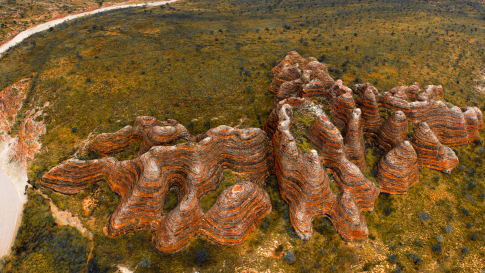
Purnululu National Park, Australia
Read about one of the most remote World heritage sites on Earth. Odyssey takes you to visit as part of a small group package tour for mature and senior travellers in the Kimberley for couple and single travelers We travel in the dry season from Broome via Lake Argyle to this National park.
Questions about Australia for senior travellers
Questions About Australia for senior travellers Odyssey Traveller specialises in crafting unforgettable experiences for senior and mature-aged travellers interested in learning as a couple or as a solo traveller when they travel. Providing adventure and…

The Arrival of Aboriginal Australians on the Continent
Tracing Aboriginal history via an outback small group tour for mature and senior couples or solo travellers provides an intriguing learning platform about Australia, rock art, trading and culture that traces a history possibly some 120,000 years ago.

The Australian Outback: A Definitive Guide
Explore learn and consider what is the outback in this article. For mature and senior travelers considering joining a small group package tours into the outback to see, learn and explore about this unique place, not only the landscape but the Aboriginal approach to living. On each of the tours for couples and the single traveler you learn something different but fascinating, from Outback Queensland, the Flinders, Broken Hill and the Kimberley and the wildflowers all contribute to this question, what is the outback?
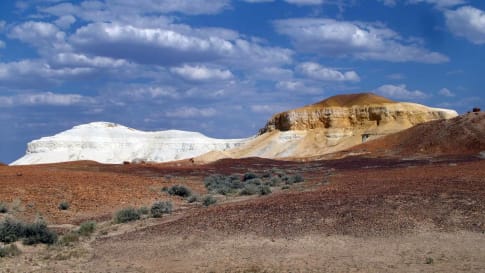
The Kimberley: A Definitive Guide
This article supports the small group package tours for mature and senior travellers, couples and solo travellers to Western Australia's Kimberley region. Learn about the wet and dry seasons and the fascinating Aboriginal history as well as the Bungle Bungles, Lake Argyle, Halls creek and resort of Broome.
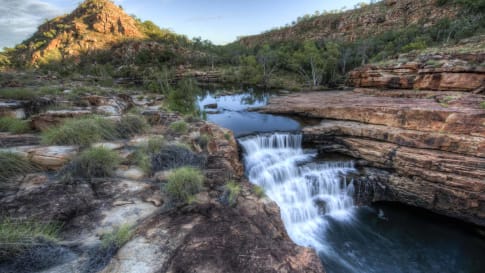
Wet and dry seasons in the Kimberley, Australia
Learn about the wet and dry season in the Kimberley to support your understanding of the Aboriginal communities lifestyle as you explore on a small group package tour for mature and senior travelers exploring as a couple or solo traveller. Read our peace of mind statement for post covid-19 travel.


